Manual Osteopathic Treatment for All Ages
Our Mission
By relieving the physical strains left behind by trauma and chronic conditions, we aim to restore proper posture and movement, and ease restrictions affecting the nerves, blood vessels, and lymphatic system. This provides the best possible opportunity for healing to run its natural course.
What We have Achieved
Nicole and Dennis each have 10 years of post-secondary education in athletic therapy and osteopathy. They maintain multiple healthcare designations in kinesiology, osteopathic manual practice, and athletic therapy.
Since founding ProCare Osteopathic & Rehabilitation Centre in 2009, Nicole and Dennis have worked with over 2,400 patients, providing more than 21,000 manual therapy appointments for acute and chronic conditions.
Osteopathy for Infants
Most often we will see infants who are considered in good health by their paediatrician, but are having difficulties with sleeping, with colic and irritability, or with digestion. Parents often wonder if it may be related to the birth process. Although the baby is healthy, sometimes he or she can continue to feel subtle dysfunction from a delivery that involved the use of forceps or vacuum, induction of labour, or caesarean section. Osteopathic treatment of infants is subtle and non-invasive, and gently works with any unnatural strain patterns found in the tissues.
Osteopathy for Young Children
When parents seek osteopathic treatment for their young child, they might be concerned about issues such as recurrent ear infections, delays in physical or neurological development, asthma and allergies, or early signs of academic difficulties as they begin school (e.g. learning difficulties, attention deficit hyperactivity disorder). The purpose of an osteopathic consultation in these cases is to determine if there is a structural dysfunction that could contribute to these conditions, and to plan a gentle treatment protocol to correct what is found.
Osteopathy for Adolescents
During this extremely active phase of life, the young person is dealing with a combination of growth spurts and the bumps and bruises that come with physical activity. They often seek help after a broken bone has healed, following an ankle sprain, or with the development of tendinitis in their knees. Manual osteopathic treatment performed in conjunction with physiotherapy or athletic therapy can be beneficial for the types of injuries experienced at this age.
Osteopathy for Adults
During that period of balancing work life, parenting, and pushing to stay active, approximately 12% of Canadian adults aged 20-64 will experience sprains, strains, fractures, concussions, injuries to the spine, or other musculoskeletal injuries severe enough to limit their activities in a given year, according to Statistics Canada. People in this age category also seek help with other health issues, such as degenerative disc disease of the spine, digestive difficulties, headaches and migraines, sciatica, or chronic tendonitis. Osteopathic treatment can assist the person to fully recover from acute injuries, or to help manage the symptoms of chronic conditions.
Osteopathy During Pregnancy
Many women will seek osteopathic treatment during pregnancy, particularly to address any mechanical problems in the spine and pelvis that could interfere with the postural adaptation for mom during the pregnancy, or with the delivery. If the mobility of the lumbar spine, the sacrum and coccyx, the sacroiliac joints, and the pubic symphysis are compromised due to trauma or altered tension in the pelvic floor muscles, it may limit the opening of the pelvis during childbirth. Osteopathic techniques are gentle, and are safe at all stages of pregnancy. However, due to the delicate nature of pregnancy between weeks 12 and 16, treatment during that time is generally avoided.
Osteopathy for Seniors
With medical advances in the fields of orthopaedic surgery and pharmaceutical intervention for chronic conditions, seniors are more active than ever before. While most seniors have learned that they need to make certain adjustments to their active lifestyle and listen to their body a little bit more, they will inevitably struggle with activity-related injury from time to time. Osteopathy can be a great choice for seniors who are still involved with physical activity, and need help with sprains, strains or early osteoarthritis.
If the health issues are more advanced or degenerative in nature, gentle osteopathic manual treatment can be a valuable tool in symptom management during this phase of life.












